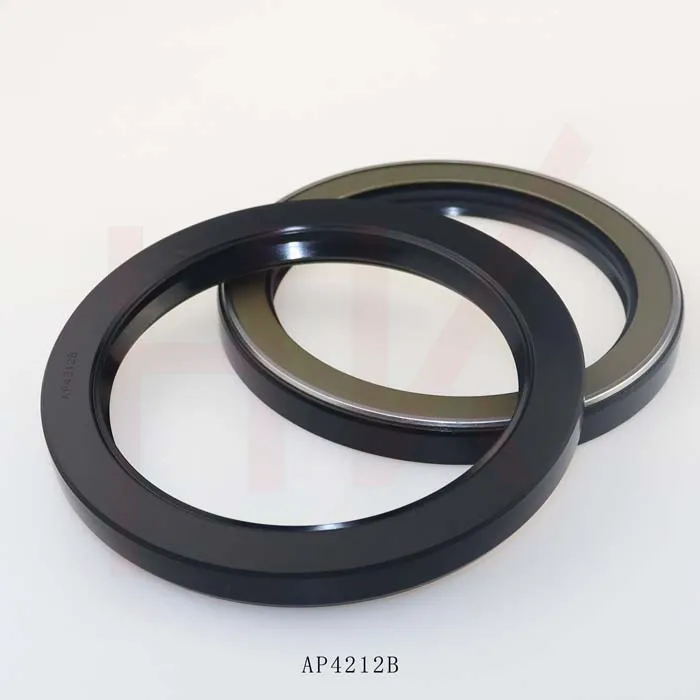Septemba . 08, 2024 04:31 Back to list
hydraulic seal replacement
Hydraulic Seal Replacement A Comprehensive Guide
Hydraulic systems are vital components in various industries, powering everything from construction equipment to manufacturing machinery. One crucial part of these systems is the hydraulic seal, which prevents fluid leaks and maintains pressure within the hydraulic circuit. Over time, seals can wear out due to heat, pressure, or contamination, making timely hydraulic seal replacement essential for optimal system performance.
Understanding Hydraulic Seals
Hydraulic seals are designed to minimize leakage and ensure that hydraulic fluid flows efficiently through the system. They are typically made from materials such as rubber, polyurethane, or PTFE, each selected based on its application and operating conditions. Common types include O-rings, rod seals, and piston seals, each serving unique functions within the hydraulic system.
Signs of Worn Seals
Identifying when to replace hydraulic seals is critical to avoiding costly downtime and repairs. Here are some common signs of worn seals
1. Fluid Leaks One of the most obvious indicators is visible hydraulic fluid leaking from the equipment. This can lead to decreased efficiency and environmental hazards. 2. Decreased Performance If the hydraulic system is not performing as expected—such as slow operation or erratic movements—this could signal that the seals are failing.
3. Increased Noise Unusual sounds during operation may indicate that air is entering the system due to compromised seals.
4. Contamination If contaminants are present in the hydraulic fluid, it may indicate that the seals have become damaged and are no longer effective.
The Replacement Process
hydraulic seal replacement

Replacing hydraulic seals can be a straightforward process if proper procedures are followed. Here’s a step-by-step guide
1. Safety First Before beginning the replacement process, ensure all machinery is powered down and depressurized. Utilize appropriate personal protective equipment (PPE).
2. Disassemble the System Carefully detach the hydraulic components where the seals need replacing. This step may include removing cylinders or valve assemblies.
3. Inspect for Damage Once disassembled, inspect the components for any wear or damage. This is also an excellent opportunity to check for other issues that may require attention.
4. Remove Old Seals Use a pick or similar tool to carefully extract the old seals without damaging the housing or any mating surfaces.
5. Clean the Surfaces Thoroughly clean the sealing surfaces to remove any debris, dirt, or old seal material. A clean surface ensures proper sealing.
6. Install New Seals Carefully place the new seals into their designated grooves. Check the orientation and ensure they fit snugly without stretching or twisting.
7. Reassemble and Test Reassemble the hydraulic components and conduct a pressure test to ensure there are no leaks. Monitor the system closely during initial operation to confirm everything is functioning correctly.
Conclusion
Regular maintenance, including timely hydraulic seal replacement, is key to ensuring the longevity and efficiency of hydraulic systems. By staying vigilant for signs of wear and following proper replacement procedures, operators can help avoid unexpected breakdowns and maintain optimal operational performance. Investing in quality seals and prioritizing maintenance can lead to significant cost savings and improved productivity over time.
-
The Trans-formative Journey of Wheel Hub Oil Seals
NewsJun.06,2025
-
Graphene-Enhanced Oil Seals: Revolutionizing High-Pressure Oil Sealing
NewsJun.06,2025
-
Future of Hydraulic Sealing: Advanced Intelligent TCN Oil Seals
NewsJun.06,2025
-
Don’t Let a Broken TCV Oil Seal Ruin Your Day
NewsJun.06,2025
-
Bio-Inspired Dust Seals for Better Sealing Performance
NewsJun.06,2025
-
Biodegradable and Sustainable Hydraulic Seal Materials
NewsJun.06,2025
-
Top Oil Seal Solutions for Your Industrial Needs
NewsMay.22,2025
Products categories
















